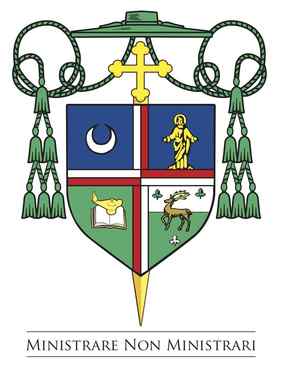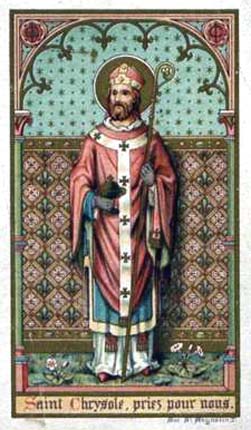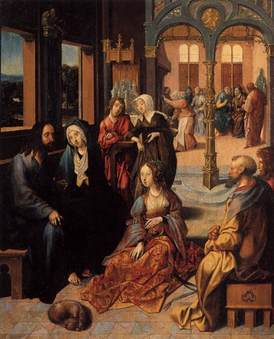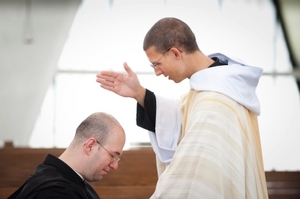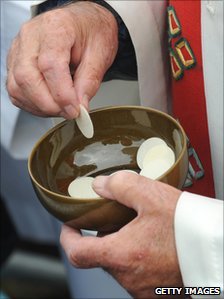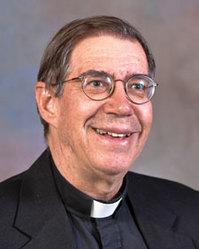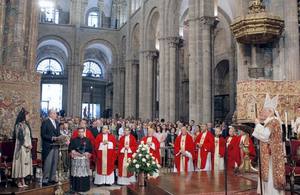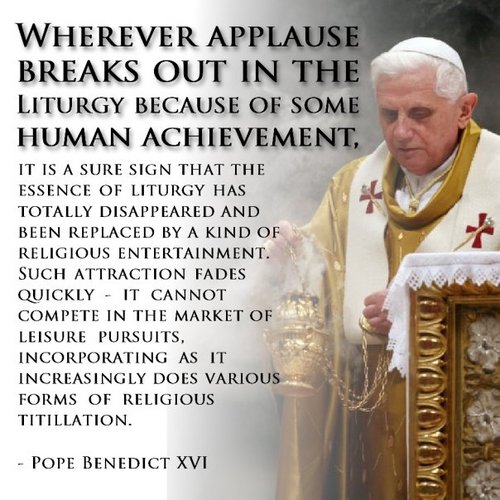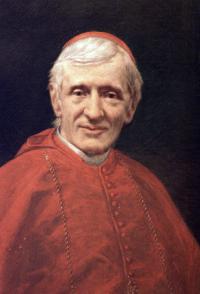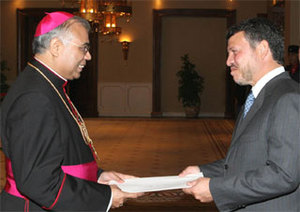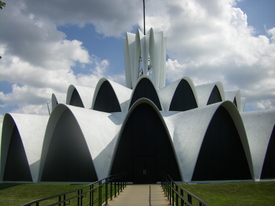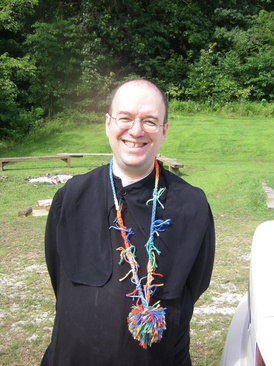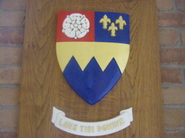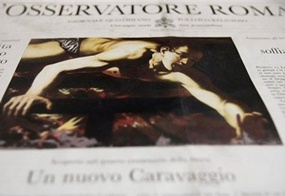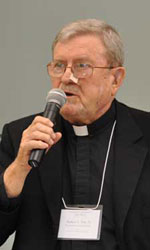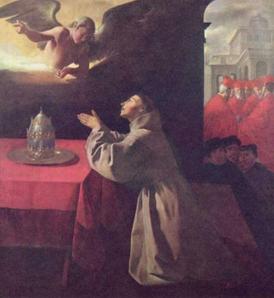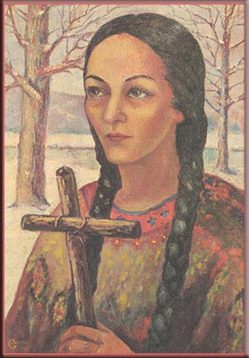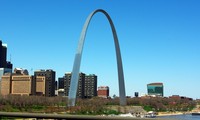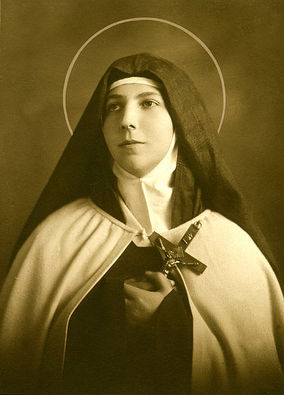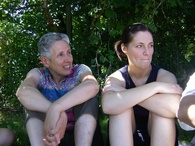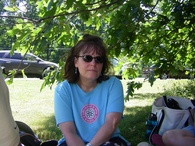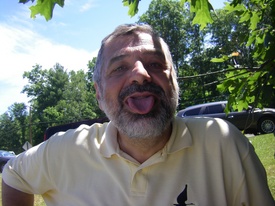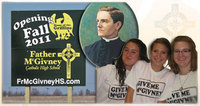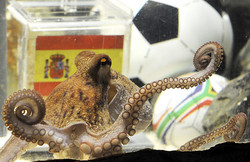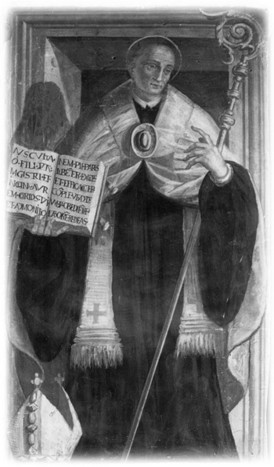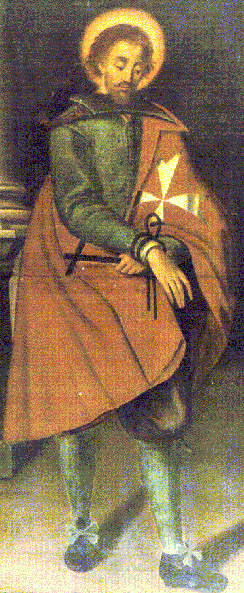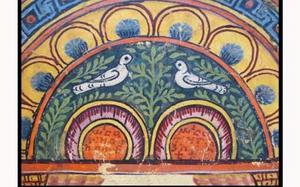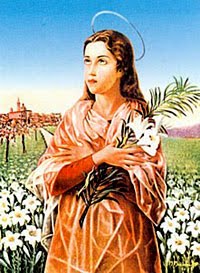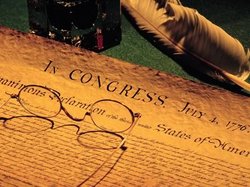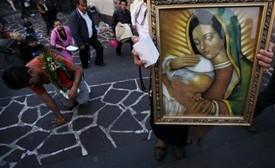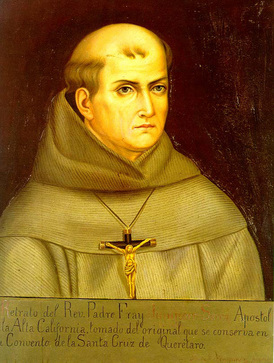The Benedictine monks of the Monastery of Saints Peter and Paul have captured my personal, spiritual and theological imagination. Why? Because they seem to be attentive to the "right things" in the Rule of St Benedict and they are asking the right questions when it comes to their desires. Their history and on-going life as Benedictine monks is lived in light of the charism given to the Church in Communion and Liberation is strikingly beautiful and "on target" as far as I am concerned. They, though not perfect by any means, are attentive to their humanity; the monks are are attentive to their "I", the whole person. Plus, any group of monks to make beer (see this link for an Italian article/photos) can't be all that bad, can they? Visit the monks' website for their beer.
Below is the most recent article on the La Casinazza monks was published in the April issue of Traces; other articles on them con be found at the Traces webpage.
In front of Him: Silence, liturgy, work.
We spent 24
hours at the Benedictine monastery founded in 1971 on the edge of Milan, Italy.
It is a place where, from bottling beer to plowing the fields, everything has
value, because "it is in relation to Christ," and contributes to generating a
people-even in Japan.
by Fabrizio Rossi
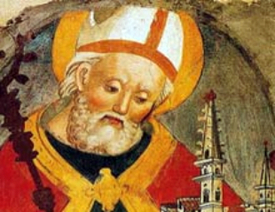
"Do you see this fork? You might not
even notice it. Or you might be amazed, because someone placed it on the table.
Nothing can spare you from having to move: in the monastery or in any other
place, you are the one that makes the difference." The heart of this place is
summed up in these words. At La Cascinazza, the Benedictine monastery in the
countryside outside of Milan, supper has just finished. The iron gate that
separates this farm from the pastures, the fields, and the Milanese lowlands,
is closed. By reciting the "Deo gratias," the monks have broken their
silence. Out of the 24 hours of the day, "recreation" is the only moment
in which they can speak freely. And each word is precious, as I have just been
shown by Giorgio, who was among the first men who founded this community almost
40 years ago (today there are 15 of them, including 2 Spaniards and a
Brazilian, all with diverse backgrounds). As they gather together in the
chapter room at the end of a day spent in silence, a certain confusion might be
expected. Instead, no one talks over the other; they speak of how the work
went, or they help each other to judge certain facts, or share prayer intentions.
"It is not by chance," explains Fr. Sergio, the Prior, "that it is in the free
moments that what we care about most emerges. In any case, there is no lack of
arguments..." Just like a family. Then, at 8:40 pm, all arguments must give way.
As silence returns, a monk reads aloud two pages of a work by Fr. Giussani
(lately, it is Qui e ora [Here and Now], a collection of dialogues with
university students), before closing the day in the chapel with Compline and
the singing of "Ave, Regina Caelorum" with the lights out, before the icon of
the Virgin Mary.
The life of these men is like the sun rising in the world, for
"it is the moment in which humanity begins to be itself," as Fr. Giussani, who
always felt close to the Benedictine experience, used to say to them. From the
very beginning, he supported the vocations to the monastic life that began to
spring up in the Movement, like those of the CL high school students who-having
first lived at Subiaco, one of the monasteries founded by St. Benedict himself-were
at the origin of La Cascinazza. These are men who are like a seed in the earth,
destined to grow into a great tree-like the two cedars planted in the first
years of the monastery, which now dominate the courtyard, facing the central
wing of the farmhouse with the chapel on one side and, on the other, the
tractor sheds.
Ora et labora. On the side, at the entrance beneath a small
colonnade, is a schedule of the hours. Every day is the same: wake-up at 5:00
am. At 5:15, Divine Office in the chapel. Breakfast. Lauds at 6:50. Mass at
8:30. Then work. The Angelus at noon, then Sext. Lunch. At 3:00 pm, None.
Study. Some work. The Angelus again. Vespers at 7:00 pm. Then, supper,
recreation, and Compline... A routine? "The point is not to be constantly doing
something different," says Rafael, from Spain. For a dozen years, he has been
tending the garden, the orchard, and now also the monastery beehives. "Just as
with a married couple, there is newness if they relive the fascination of the
day they first met."
It is the newness that the monks are experiencing, also
ever since they began to make beer, in the old stable converted into a brewery,
the result of a search that took years. Ever since they discovered that what
they grew themselves was not enough to sustain them, they have tried out a
number of trades, even soldering microchips.
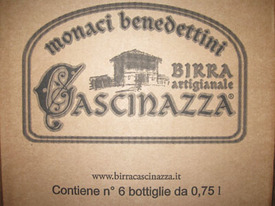
Malt and valves. "Then a friend
suggested, 'Why don't you try beer?'" recounts Fabrizio, 41, an architect from
Alessandria, Italy. "This was a job that would allow us to maintain our
rhythms, in addition to carrying on a tradition that owes a lot to monks." So
Fabrizio and Marco, an economist from Como, Italy, in 2005 traveled to a
Trappist Monastery in Flanders to learn. After several attempts ("We
started out in the kitchen with a pot!"), the first Italian monastic beer was
born: "Amber," to which the dark version, "Bruin," was later added. "But the
real novelty is what is happening amongst us." In the brewery, along with
Fabrizio and Marco, are Quique, who arrived from Madrid in 2000, where he was a
diocesan priest, and Pietro, who entered a little over a year ago, fresh from
completing medical school. So, an architect, an economist, a theologian, and a
doctor... "Each of us is different from the others. But it is the work that
makes us grow in communion. That is how Sergio proposed it to us: 'Get together
for one minute a week and ask yourselves why you are together.' It is a
continual discovery." And there is no lack of struggle: "Think about the person
that cleans the bathrooms," recounts Quique, who spent the first six years
armed with gloves and a cleaning rag. "It is not what you would choose... But, as
Sergio said to me one day, "in obedience, everything corresponds to you even if
nothing corresponds." Sure, he needed time to understand: "Just as when I was
asked to make beer. I objected for a year. 'I studied philosophy and theology;
what do I have to do with malt and valves? The most fundamental thing, however,
is not to keep from rebelling, but to give in to the relationship with that
You. Now I see that to face someone is worth my while."
To face someone, in
each instant. The psalm sung a few hours ago, before the world had
awoken, comes to mind: "To You I cry out day and night..." Or Mass, celebrated
today by Fr. Claudio-who came from the city of Varese 35 years ago and who has
the task of guiding the novices-in which one by one the monks brought the intentions
that relatives and friends have asked for: "For Silvia's studies," "For those
without work," "For Paolo and Pino's journey in Novosibirsk," "That Your face
may illuminate the desperate..." Behind these walls, where news enters only if
someone brings it, such attention to what is happening in the world-in real
time-is striking, even if, apparently, not even L'Osservatore Romano or the
Italian Bishops Conference newspaper ever arrive on time!

"We are here to carry
the cry of each man to Christ," explains Fr. Sergio who, in the 1970s, worked
on the railroads and, hoping to respond to his own desire for meaning and for
justice, threw himself into politics as a labor union activist. "The point is
to be serious with one's own question; otherwise, you can look at any tragedy
and remain indifferent. It is what I told the monks this morning in the
chapter, reading a letter of St. Bernard: we cannot care for others if we
forget ourselves." Hence, the value of silence: "To help each other recognize
Someone present. Far from being mortification, it is what you do when faced
with something beautiful: you are speechless. Imagine if Fr. Giussani lived
upstairs: you would never hear the vacuum cleaner, but we would always be
tensed toward his presence."
We are interrupted by the bell for lunch. It rings
seven times a day just for prayers. And it reminds everyone of the same thing:
"It is the Mystery calling. Perhaps you were in your cell, meditating on a
wonderful text, and then the bell rings and you are provoked to look at
something even greater." On the way to the refectory, we pass a painting by
Letizia Fornasieri: two sunflowers on a table. It is like an offering on the
altar: "This is why we are here. And those sunflowers remind us that even
eating is a liturgy." In fact, when the horseshoe-shaped table is full, with
the Prior at the center, the food is blessed. Today, there is tomato pasta
along with a potato and walnut soufflé, thanks to Pippo, an architect who has
lived here since 1985. While the other monks pass the dishes in silence, one of
them reads aloud a passage from the Bible or from the Rule, along with other
texts for meditation (for the record, today it is Fr. Claudio's turn, and the
texts are some articles from the latest issue of Traces). Everything is for the
glory of God. Whether you eat, whether you drink...
Even a coffee. St. Benedict
had not foreseen it, but even this is part of his "welcome guests as you would
Christ." The Prior offers it to us after lunch. And, in the meantime, he tells
us the story of this place, about the two who had been CL high school students
and how in 1968 they entered the monastery of Subiaco, about those who weren't
accepted in 1970, about the esteem of the Abbot-President of Subiaco, Gabriel
Brasó, for the experience of those young men and Fr. Giussani. And about
this farm south of Milan, discovered by their mutual friend, Paolo
Mangini, that would be the place for the monastery, born as a result of all
these factors and the proposal of a new community. The proposal came from
Bernardo Cignitti, an abbot from Savona who, on the heels of the Council and
the exhortations of Paul VI, was deeply concerned about the rebirth of the
Benedictine experience: "God writes straight with crooked lines," comments
Bruno, one of the young men not accepted at Subiaco, who 40 years ago was a
book binder and now does the same thing in La Cascinazza. On June 29,
1971 (Feast of Ss. Peter and Paul, to whom the monastery is dedicated), eight
monks attended the Mass that inaugurated La Cascinazza. During the homily Fr.
Cignitti said, "I offer my life as fertilizer for this community." In September
he died of a tumor.
"For us, the relationship with Fr. Giussani was
fundamental, above all in those years," remembers Fr. Sergio. "He always repeated
to us that at the center of monastic experience there is no particular practice
other than Baptism: if Christ is everything for me, He is for everyone." In the
1980s, the relationship with the Cardinal Archbishop of Milan, Carlo Maria
Martini, was also decisive. He granted recognition to the community and in 1990
erected it as a Priory sui iuris according to diocesan law.
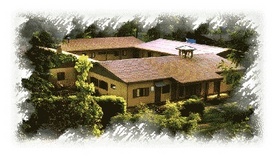
The shadow of the
moon. With time, a whole host of relationships has been added to these
ones, relationships one would least expect, like the Buddhist monks from Mount
Koya in Japan who come to visit them annually, and like the friendship with the
American painter William Congdon. Two of his paintings of La Cascinazza by
night are hanging on the walls: "The monastery represents the self. The moon is
the Mystery present, which illuminates it. From there, the shadow cast onto the
courtyard-because out of that relationship a people is born." In 1959,
after a long quest, Bill-as they all refer to him-met the faith, and lived
the last 20 years of his life in a small house on the monastery grounds. "He
was like one of us: a wounded man, facing the Mystery."
A wounded man. But a
man in relation with that You. Or, precisely because he was in
relationship with that You: "When you fall in love, you are restless until you
see that woman again," explains Rafael. "You miss her, precisely because she
exists. She is part of you. That is why we experience nostalgia to the extreme:
we are wounded because He exists."
Time is up. The monks have to return to work.
As I pass by the two sunflowers, only one sound breaks the silence: silverware.
In the refectory, someone is setting the table.
 To your Name's own greater glory,
To your Name's own greater glory,